Top 12 Frontend Development Tools for Modern Web Development

Table of Contents
Frontend development tools are at the centre of the rapid evolution of the web development industry. With the use of these tools, developers may produce interactive, user-friendly websites and applications.
Choosing the right tools can make all the difference in producing an outstanding user experience, whether you want to work for a front-end development company, hire a front-end developer, or offer front-end development services.
From powerful code editors and JavaScript frameworks to CSS preprocessors and testing tools, the frontend environment is always evolving. This article will cover the top 15 frontend development technologies that will alter web development in 2025 and help developers create faster, smarter, and more compelling digital experiences.
Slow, outdated UI tools limit your web app’s potential.
Empower performance with modern tools.
What are Frontend Development Tools?
Frontend development tools are at the centre of the rapid evolution of the web development industry. These tools allow builders to create interactive, consumer-friendly programs and webpages. Whether you need to paint for a front-end improvement organisation, hire a front-end developer, or provide front-end improvement offerings, deciding on the right tools could make all the difference in growing a wonderful user enjoy.
According to current research, over 75% of consumers rely on their perception of a business enterprise’s legitimacy on its website design, and 94% of first impressions are impacted by using a website’s visual appeal and responsiveness. Frontend developers need to apply the newest era if they want to live ahead of the curve.
Customers want websites and apps to load quickly and perform on all devices. In this case, front-end development tools are useful. Using these tools, developers can design, test, and improve the objects that users see and interact with, such as buttons, animations, forms, and site layouts. Without them, it will take more time and effort to offer a smooth experience.
Modern internet apps rely upon HTML, CSS, JavaScript, frameworks, and development tools to carry out nicely. A frontend developer can use Webpack, Vite, or React. Developer Tools to swiftly package content, speed up website load times, and improve group collaboration. These technologies also support automation, which makes it less complicated to control repetitive responsibilities like photo optimisation, CSS prefixing, and code formatting.
Adopting the appropriate device set is essential for any frontend development employer. It will increase productivity but also ensure regular, satisfactory results throughout diverse initiatives. Businesses that use expert frontend development services gain a competitive benefit by reducing time to market, improving UI performance, and growing scalability. If you want to hire a frontend developer, you are searching for someone conversant with present-day equipment.
In short, frontend development tools make developer duties easier while increasing user experience. They contribute to the translation of creative design concepts into responsive, engaging, and high-performance digital solutions, such as websites and apps that consumers enjoy revisiting.
Which are the Most Popular Frontend Tools in 2025?
The frontend industry is constantly changing, and it has introduced several favourites that developers use daily. Frontend development tools are now the foundation of contemporary web projects as websites grow faster, smarter, and more interactive.
These tools have a significant impact on how seamless and effective the finished result feels, regardless of whether someone works for a front-end development business or wants to employ one.
1. React.js
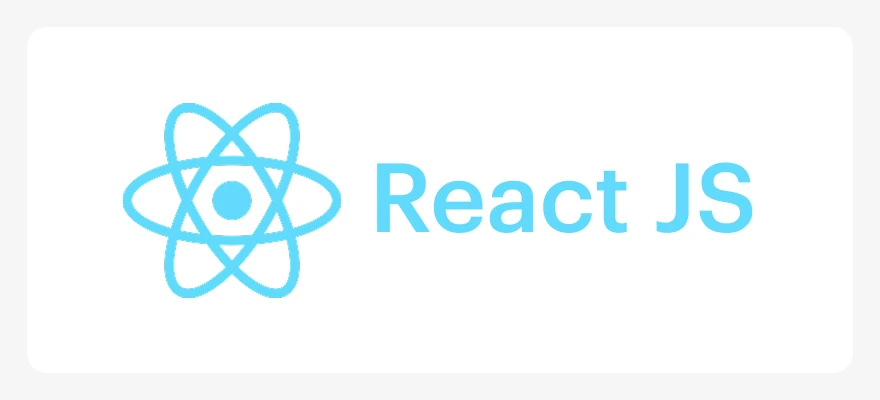
Facebook developed the JavaScript language React.js specifically to create fast and dynamic user interfaces for single-page apps. Large programs use component architecture, which makes them easier to create and maintain.
- Speciality: React apps load quickly, scale easily, and maintain stability even as features expand. Virtual DOM allows for faster rendering, reusable components, and substantial community support.
- Release Date: 2013
- Key Features:
- One-way data binding.
- Strong ecosystem (Redux, Next.js, React Router).
- Huge library and community support.
- Backed by Meta.
- Huge Community Support.
- Ideal for dynamic, modern web apps.
2. Angular

TypeScript is the foundation of Google’s Angular front-end framework. It is ideal for enterprise-level applications that need structured development procedures. Google maintains Angular, a complete front-end framework. Angular guarantees constant performance across huge apps and minimises repetitive coding.
- Speciality: Two-way data binding and a full MVC (Model-View-Controller) framework. Strong architecture, type-scripted-based, great for enterprise projects.
- Release Date: 2016 (Angular 2+)
- Key Features:
- Dependency Injection
- Built-in routing
- Great for large and complex apps
- Built-in routing
- Two-way data binding
- Suitable for large-scale apps
3. Vue.js
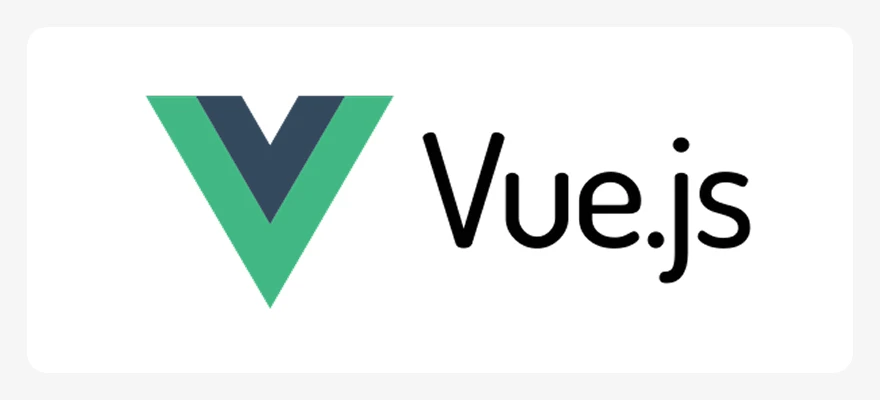
Vue.js is a progressive JavaScript framework that combines the best aspects of Angular and React and is incredibly adaptable and simple to use. It is best for building flexible and lightweight user interfaces. It’s simple, elegant, and powerful and great for both startups and mid-sized applications. Angular reduces repetitive code and ensures consistent performance across large applications.
- Speciality: Lightweight, beginner-friendly, and perfect for fast UI development. Simple learning curve with powerful reactivity.
- Release Date: 2014
- Key Features:
- React data binding
- Component-based architecture
- Smooth integration with existing projects
- Lightweight bundle size
- Easy to integrate with existing projects
- Ideal for beginners
4. Svelte
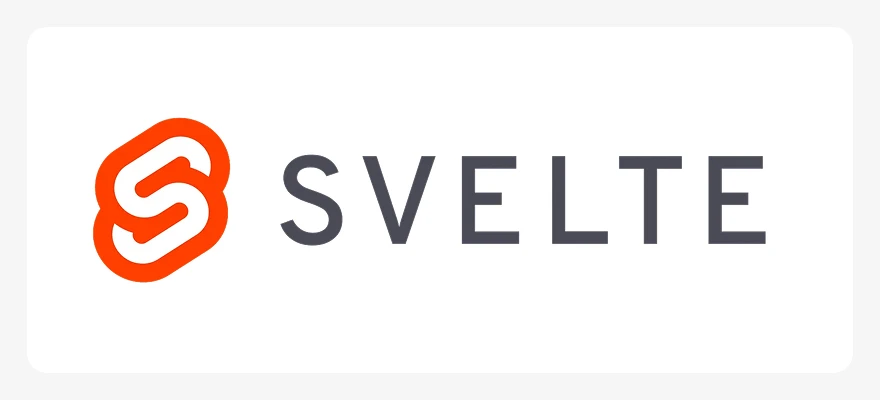
The best UI framework for developing quick applications is Svelte, which compiles code at construct time. Even on low-end gadgets, it gives brilliant overall performance. Svelte shifts this workload to the development phase, in comparison to frameworks like React or Vue, which manage the majority of the work inside the browser.
- Speciality: No virtual DOM direct compilation for better performance. It compiles your code into highly optimised JavaScript at build time. Svelte apps load faster and have less overhead, making them one of the most effective frontend development tools available today.
- Release Date: 2016
- Key Features:
- Lightweight bundle sizes
- Easy Syntax
- Blazing fast runtime
- SvelteKit for routing and server-side rendering.
- Compiler-based approach
5.Next.js

Next.js is a React-based framework that enables server-side rendering and static website generation, allowing you to build modern, SEO-friendly web applications. It combines server-side generation (SSR), static site generation (SSG), and client-side rendering (CSR), giving developers full control over how their apps load and perform. It is ideal for production-grade projects that require SEO, performance and scalability.
- Speciality: Hybrid rendering (SSR + SSG), making apps faster, more secure, and Google-friendly for improved speed and SEO.
- Release Date: 2016
- Key Features:
- API routes
- Image Optimization
- Built-in routing
- File-based routing
- Edge and serverless support
6.Tailwind CSS

Tailwind is a utility-first CSS framework that facilitates UI design by providing ready-to-use classes. It accelerates UI development without requiring a certain design style. Instead of writing long custom CSS, developers use small utility classes to build clean, responsive interfaces. It’s trendy, lightweight, and perfect for visually polished web apps. Developers can build beautiful UIs quickly without leaving the HTML file.
- Speciality: Helps create custom designs without writing traditional CSS. Gives total design freedom through utility classes.
- Release Date: 2017
- Key Features:
- Highly Customizable
- Mobile-first utilities
- Fast prototyping
- Mobile-first styling
- Tremendous design consistency
- Popular among modern UI designers
7.Bootstrap
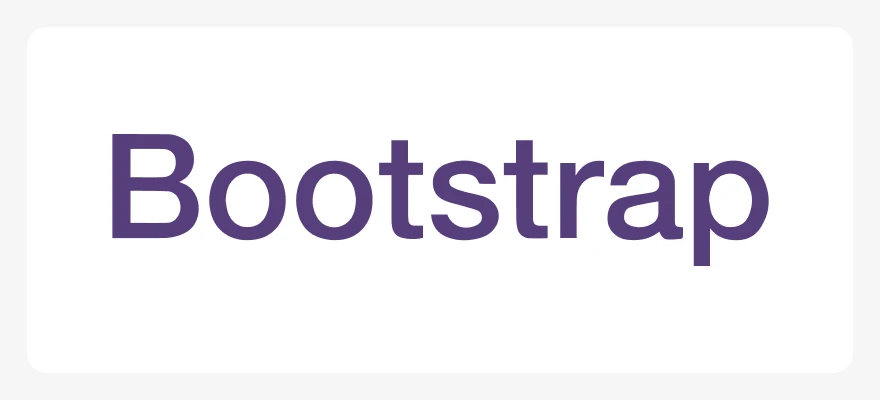
Bootstrap is one of the oldest and most trusted CSS frameworks for creating responsive and mobile-friendly websites. It is created by Twitter for building mobile-first sites. It is perfect for rapid prototyping and consistent UI design.
- Speciality: It has ready-made UI components that include navbars, grids, and modals. It’s pre-built components and ready-made design blocks.
- Release Date: 2011
- Key Features:
- Large component library
- Easy grid layout system
- Great documentation
- Great for rapid prototyping
- Massive community
8. Webpack

Webpack is a mobile bundler that effectively bundles all of your files, CSS, and JavaScript for the browser. Managing numerous files by hand gets challenging as programs get larger. Webpack solves this problem by automating everything in the background.
- Speciality: Optimises application speed with bundling and code-splitting. Extensively utilised in enterprise applications and very flexible.
- Release Date: 2012
- Key Features:
- Loaders and plugins
- Tree shaking for smaller bundles
- Hot module replacement
- Cod splitting
- Advanced optimisation options
9. Vite
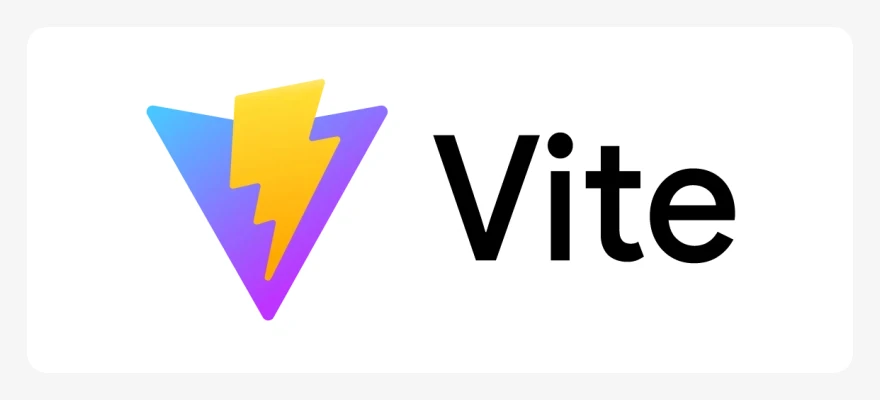
Vite is a next-gen frontend build tool that offers lightning-fast development using native ES modules. It offers instant server starts and lightning-fast HMR (Hot Module Replacement). Traditional bundlers like Webpack need to compile your entire project before running, but Vite works differently. This makes development extremely fast, especially for large projects.
- Speciality: Instant server startup and extremely fast HMR. Blazing fast development environment.
- Release Date: 2020
- Key Features:
- Modern build pipeline
- Optimized production builds
- Works with Vue, React, Svelte, etc.
- Native ES modules
- Faster builds than Webpack
10. GitHub Pilot

GitHub Copilot is an AI pair-programmer that speeds up code writing and eliminates tedious work for front-end developers. An AI-assisted coding tool called Copilot helps speed up developers’ code writing.
- Speciality: Code completions, suggestions and error detection. Improves productivity by up to 55%, according to GitHub’s 2024 report.
- Release Date: 2021
- Key Features:
- Supports all major frontend languages
- Works in VS Code
- Smart code recommendations
- Saves time in repetitive tasks
- Improves productivity
11. Figma
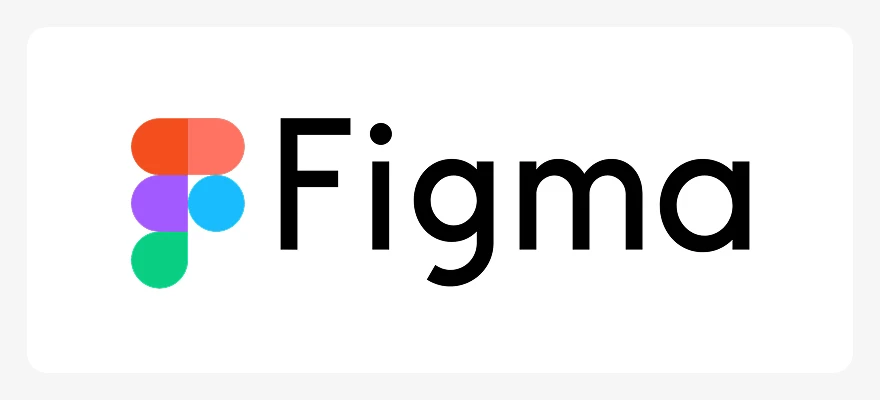
Figma is a collaborative cloud-based UI/UX design tool used by designers and developers to create website and app interfaces. It removes communication gaps between designers and developers. Unlike older design tools that require heavy software installations, Figma works directly in the browser, making it accessible from any device.
- Speciality: Real-time collaboration, cloud-based workflows and easy design handoff.
- Release Date: 2016
- Key Features:
- Component libraries
- Prototyping
- Developer mode
- Ideal for teams
- Easy developer handoff
- Used by major design and development companies
12.NPM (Node Package Manager)

NPM is the default package manager for Node.js and the largest software registry in the world. It provides access to millions of open-source JavaScript libraries. Whether you’re installing frameworks or tools, NPM makes managing project dependencies quick, organised, and effortless.
- Speciality: Helps install, manage, and update frontend libraries and tools. It lies in its massive ecosystem and strong dependency.
- Release Date: 2010
- Key Features:
- Millions of libraries
- Easy dependency management
- Excellent package scripts
- Built-in script runner for automating tasks
- Strong integration with frontend tools
Inefficient tools slow your workflow.
Boost productivity with advanced tools.
What Makes a Good Frontend Tool?
Selecting the programming language or framework is selecting the correct frontend development tool. Developers depend on technology that increases productivity and maintains amazing code as modern-day websites end up quicker and aesthetically pleasing. Instead of making the development technique greater difficult, an amazing frontend tool has to make it less difficult.
Here are some key factors that define a high-quality frontend tool today:
1. Speed and Performance
A good tool should help a frontend developer work faster, not slow them down. In fact, according to recent DevTech reports, over 68% of developers prefer tools that reduce build time by at least 30%. Fast bundling, quick updates, and smooth debugging directly impact how efficiently a project grows.
2.Ease of Use
Whether you’re a scholar getting to know HTML or an experienced the front-cease developer growing agency-level applications, the tool needs to be easy to use. It is less complicated to use because it has easy documentation, a clean interface, and requires minimal setup. This is also why many companies prefer to hire frontend devs who are familiar with solutions that enable simple onboarding.
3. Strong Community and Ecosystem
The first-rate frontend improvement gear has large, lively groups that keep them up to date and free of bugs. Tools including React, Vue, and Tailwind CSS are great examples; they evolve faster due to the fact that hundreds of builders make contributions, ideas, plugins, and bug fixes. A wholesome atmosphere additionally assures long-term aid, which is something that each front-end development commercial enterprise strives for.
4. Scalability and Flexibility
As websites expand with new features, your tools must handle larger codebases without breaking performance. A scalable tool allows you to manage components, state, routing, and assets easily. This is especially important for companies offering frontend development services that handle enterprise clients.
5.Compatibility With Modern Standards
A good tool should assist with the latest JavaScript functions, responsive design recommendations, and browser compatibility. Tools that engage seamlessly with frameworks, APIs, CI/CD pipelines, and design systems grow developer productivity whilst lowering lengthy-time period maintenance troubles.
Which Code Editors are Best for Frontend Developers?
When it comes to frontend development tools, a good code editor can significantly boost your productivity. It affects how quickly you can write code, how easy it is to detect problems, and how comfortable you are when designing user interfaces.
The code editors that front-end developers now use and prefer are shown in this brief comparison chart.
Code Editor | Best For | Key Features | Why Developers Love It |
Visual Studio Code (VS Code) | Beginners to advanced frontend developers | IntelliSense, Extensions Marketplace, Debugger, Git Integration | Fast, customizable, and lightweight. It supports almost every frontend framework and is highly recommended by most front-end development companies. |
Sublime Text | Developers who want speed and simplicity | Lightning-fast editing, Multiple cursors, Package Control | Very fast performance, low memory usage, and perfect for quick edits or large files. |
Atom | Collaborative coding and customisation | Built-in GitHub integration, Themes & packages, Smart autocomplete | Great for team environments and easy to customise using HTML, CSS, and JavaScript. |
WebStorm | Professional frontend development services & enterprise projects | Advanced refactoring, Framework support (React, Vue, Angular), Built-in tools | A premium editor with powerful features ideal for companies and teams handling large codebases. |
Brackets | Students, beginners, and designers | Live Preview, Inline editing, Preprocessor support | Very user-friendly and perfect for front-end developers who work closely with designers. |
What are the Common Mistakes Developers Make With Front-End Tools?
Modern frontend development technologies make it easier to create websites, but developers, especially novices, regularly make some common errors that prevent their productivity or have a destructive impact on them personally.
These errors are effortlessly avoidable with the proper know-how and a little effort. According to the latest surveys performed via several frontend development organisations, incorrect device usage accounts for more than 60% of front-end problems instead of the tools themselves.
Here are some of the most common mistakes developers make:
1. Using Too Many Tools at Once
One of the biggest mistakes is installing multiple tools “just because they are popular.” The project is heavy and complex due to the numerous libraries, frameworks, and extensions. Only tools that genuinely address problems should be used by frontend developers; they shouldn’t add more.
2. Ignoring Tool Configuration
Tools like Webpack, Vite, ESLint, and Babel work best when configured correctly. Instead of going through the setup process, many novices rely on default parameters, which can result in performance problems, sluggish builds, or superfluous code in production.
3. Not Updating Tools Regularly
The majority of frontend development services use cutting-edge, contemporary tools. Compatibility issues and security vulnerabilities may arise from using out-of-date versions of frameworks, editors, or packages.
4. Choosing Tools Without Understanding Them
Developers sometimes pick tools just because a tutorial recommended them. It becomes challenging to resolve problems or scale the project later if you don’t grasp how the technology operates. A front-end developer should review the documentation, use cases, and long-term support of any product before utilising it.
5. Overlooking Performance & Bundle Size
Although frontend technologies aid in the creation of attractive user interfaces, improper usage of them can result in enormous bundles that cause a website to lag. Many novices neglect to use features like tree-shaking, optimise pictures, and eliminate unnecessary code.
How to Choose the Right Frontend Tools For Your Project?
With new frameworks, libraries, and construction equipment being released every few months, it might be hard to pick the best frontend improvement equipment. The key is to concentrate on what your project genuinely desires, as opposed to deciding on tools simply because they are famous.
Therefore, knowing the undertaking’s size, complexity, and long-term goals ought to usually be the first step in making a decision, irrespective of your level of experience as a the front-give up developer.
The next thing to consider is the talent stage of your group. If your crew is snug with React, for instance, choosing Angular may also sluggish down development. A precise rule followed by many front-end development groups is: pick tools that enhance productivity, not challenge your learning curve unnecessarily.
You also have to consider performance, community support, security updates, and the way scalable the tool is, particularly in case your website or app will grow over the years.
Understand project requirements
Select libraries and frameworks that are appropriate for the goal of your project: Different toolkits are needed for web apps, dashboards, landing pages, and e-commerce.
Check out the community support and documentation
Tools with strong communities make debugging and learning much easier.
Consider long-term scalability
If the project grows, use tools known for stability and flexibility. This is why companies often use front-end developers with experience in scalable frameworks.
Evaluate performance requirements
Lightweight frameworks and effective build tools are necessary for apps that load quickly. Performance is crucial because even a one-second delay can lower conversions by up to 7%.
Look at the skills and experience of the team
A tool that your staff can use efficiently is the best. This shortens the development cycle, saves time, and lowers errors, all of which are crucial for businesses that offer front-end development services.
Outdated interfaces put you behind competitors.
Harness innovation for frontend success.
Conclusion
Frontend improvement gear at the moment is the cornerstone of contemporary internet improvement, allowing builders to produce websites which might be quicker, extra fluid, and extra aesthetically stunning. The advent of powerful construct equipment like Webpack and Vite, collectively with frameworks like React, Vue, and Svelte, has made the development process notably more efficient.
Particularly for massive groups operating in an expert setting, those technologies foster collaboration, streamline tedious chores, enhance code quality, and increase productivity. The environment gives tools that streamline each step of improvement, from writing code to testing and deployment, whether or not you’re a student analysing frontend development or an agency looking to lease frontend engineers.
FAQs
Frontend development tools are software and frameworks that help developers build the visual and interactive parts of a website or app. They speed up development, improve code quality, and ensure faster, more user-friendly experiences for end users.
Some of the most widely used frontend tools include React, Vue.js, Angular, Vite, Webpack, Tailwind CSS, Bootstrap, and GitHub. These tools help developers build modern, scalable, and high-performing web applications.
For large-scale enterprise apps, React, Angular, and Vue.js are top choices because they offer strong architecture, long-term support, large communities, and excellent performance. They also integrate easily with backend systems and enterprise-grade tools.

Samuel Meleder
Samuel Meleder founded Chimpare, a global company that builds software solutions. With a passion for innovation and a commitment to helping businesses grow through smart digital strategies, Samuel leads a global team delivering cutting-edge solutions across industries
Found this post insightful? Don’t forget to share it with your network!
Related Articles

Why is Everyone Investing in E-Commerce Website Development?
It is an idea that e-commerce is “just another digital trend”, but online shopping has really changed a lot in

What Will Key Trends of Generative AI Look Like in 2026?
Generative AI is no longer a futuristic idea; it’s already reshaping the way we build software, create content, and solve real-world problems.

How Is AI in Web Technology Redefining the Future of the Web?
AI is the main tool of contemporary online interactions, which has been transformed in a way that is much faster
